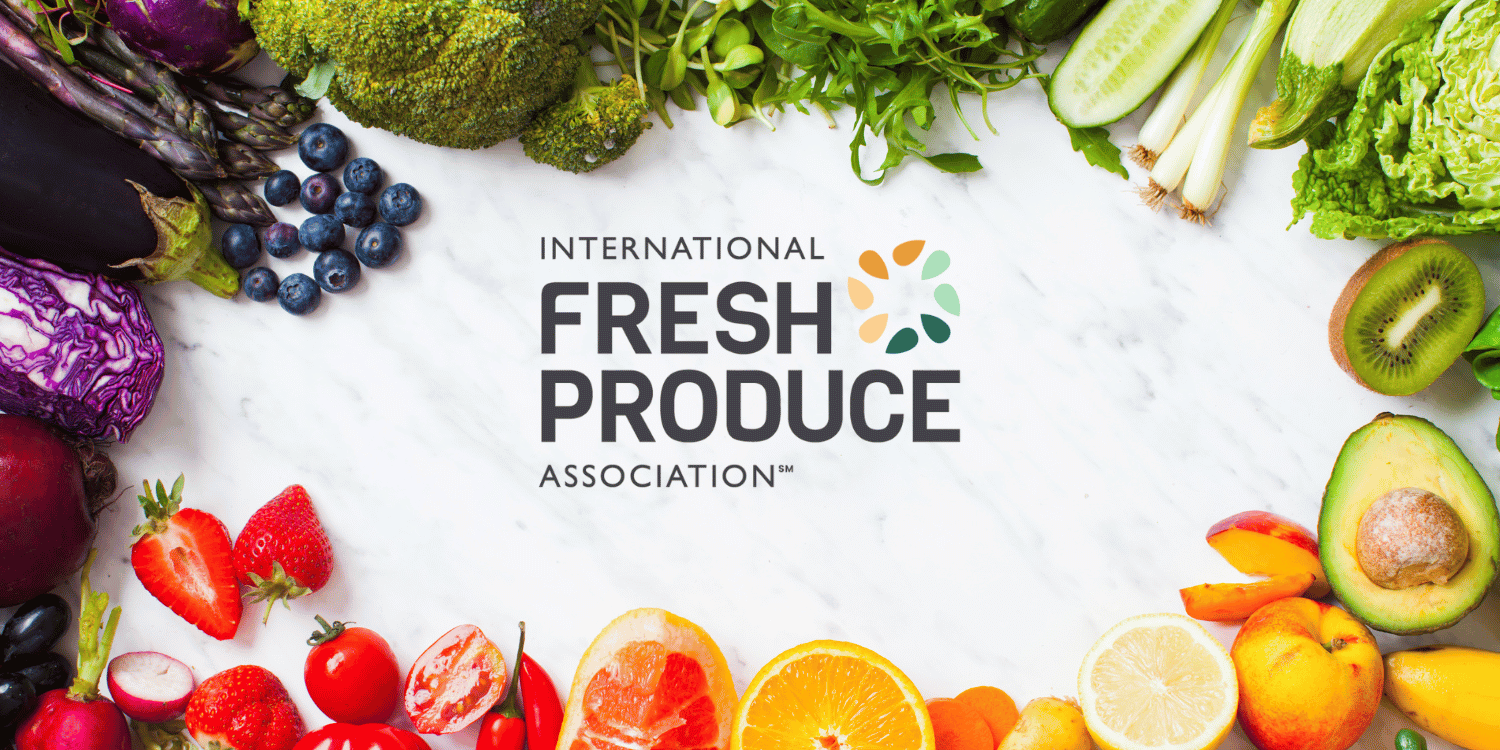In the fast-paced world of commerce, entering and expanding into uncharted territories is essential for growth.
Understanding your competition, the cultural nuances, and getting the pricing correct are crucial factors to consider.
The produce trade is no different.
There exist several tried and tested strategies which can help lessen the risk and increase success rate in this endeavor.
These strategies both safeguard the business at the inception and guarantee potential profitability in the long run.
In this piece, we will dig in into some of these strategies, detailing how they can be applied effectively in the produce trade.
- Collaborate with local partners to enhance market understanding
- Optimize e-commerce platforms for improved convenience
- Capitalize on niche products to appeal to customers
- Adapt marketing strategies to the local culture
- Offer competitive pricing to successfully penetrate the market
In the continuation of this article, we will be discussing more crucial aspects connected to penetrating new markets in produce trade.
We will explore in more detail, differing elements such as the benefits of technology-driven solutions and the significance of customer preferences in this context.
The complexity of venturing into new market terrains will be broken down further to offer you clarity and insights that can guide your business decisions.
Let me tell you, let’s carry on to fetch more useful information and broaden our understanding of this intriguing topic.
Strategies For Penetrating New Markets In Produce Trade
1. Collaborate with Local Partners for Market Understanding
In Short: Collaborating with local partners when entering new markets in the produce trade is essential for understanding customer behavior, competitor tactics, cultural norms, and business customs. This partnership, built on trust, transparency, aligned goals, and equitable sharing, facilitates quick market entry, reduces costs, manages risks, and aids in decision making, ultimately setting up your business for success.
When penetrating a new market in the produce trade, cultivating relationships with local partners is imperative.
These partnerships can provide a deep understanding of the market that is pivotal for a successful expansion.
Local partners can bring to the table an understanding that is in-depth, nuanced, and valuable – precisely what is needed to navigate the complexities of a new market.
They can provide insights into local consumer behavior, reveal the dos and don’ts, share detailed analysis of competitors, highlight norms of the society, and illuminate the business culture.
Armed with this invaluable local knowledge, your business will be on a solid footing to build an effective market entry strategy.
It’s also worth highlighting that local partners can facilitate quicker market entry by tapping into their existing network, cutting through red tape, and speeding up bureaucratic procedures.
Pertinently, collaborating with local partners helps you to reduce costs, manage risks, access important resources, and gain legitimacy in the eyes of consumers and other stakeholders.
In essence, working closely with local partners puts you in a position to identify potential pitfalls and opportunities, thereby allowing you to make informed decisions.
While establishing these relationships can be a daunting task, the benefits and returns can drastically outweigh the initial effort and make your foray into the new market more seamless.
Here are a few key points to keep in mind while collaborating with local partners for market understanding:
- Trust Building: Mutual trust is the foundation of a successful partnership.
- Transparent Communication: Clear and transparent communication curbs misunderstanding and ensures that everyone is on the same page.
- Alignment of Goals: Ensure that the goals of your business and the local partner are in alignment.
- Equitable Partnership: The partnership should be a win-win proposition with equitable sharing of resources and benefits.
In order to penetrate new markets in the produce trade, don’t underestimate the power of collaboration. It could be the key that unlocks the potential of the new market and drives the growth of your business.
I want you to remember, a well-chosen partner can not only help you understand the local market but also provide a solid foundation to expand and establish your brand in the new territory.
On the other hand, a poor choice of partner could lead to miscommunication, tensions, and potentially failure. Therefore, due diligence must be conducted before establishing any partnership.
In summary, collaboration with local partners can significantly enhance your understanding of the market, thus facilitating the successful penetration of new markets in the produce trade.
Together, you and your local partners can work towards a common goal, constantly learning from each other, and setting your business up for success.
2. Expand e-commerce platform for convenience
In Short: Digital transformation necessitates businesses, especially in the produce trade, to broaden their e-commerce platforms to increase accessibility, improve business operations, and remove barriers to purchase. Implementing an effective e-commerce platform requires an understanding of both the business and target audience, consistent updates to match market dynamics, and significant investment in data security.
Digital transformation has rendered e-commerce an inevitable reality for businesses across different sectors, and the produce trade is not an exception.
For enterprises aspiring to break into new markets in the produce trade, therefore, it is imperatively strategic to expand their e-commerce platforms for convenience.
Notably, convenience in this context, encompasses both the ease of access to the produce for the consumers and the effectiveness of business operations.

The first dimension of convenience refers to making products readily available and sccessible to customers regardless of their geographical location.
This availability removes potential barriers to purchase, such as distance and time, thereby incentivizing more customers to do business with you.
Efficient business operations on the other hand, refers to the process of streamlining the supply chain, from sourcing and stocking to selling the produce.
This efficiency translates to cost savings which can then be transferred to the consumers in form of competitive pricing.
Essentially, the advantages of expanding an e-commerce platform in produce trade are many and varied. Some of the essential benefits include:
- Broader Reach: An e-commerce platform allows for the reach of a wider pool of potential customers, not only in the local market, but also international market. This essentially broadens the trader’s market.
- Better Marketing: Through e-commerce platforms, producers can analyze the buying behavior of customers and tailor their marketing strategies accordingly.
- Lower Cost Structure: Online platforms reduce the cost of operations, enabling traders to offer competitive pricing and thus attract more customers.
- Increased Convenience: E-commerce offers consumers the convenience of shopping from anywhere, anytime making it more appealing and thus driving more sales.
- Improved Customer Satisfaction: Online platforms offer improved customer interaction and consequently better customer satisfaction which promotes brand loyalty and repeat purchases.
Having said that, the actual implementation of an effective e-commerce platform requires a dynamic and in-depth understanding of both the business and the target audience.
Product images, descriptions, prices, and overall website aesthetics, for instance, must reflect the brand’s voice and offer a seamless customer experience.
The functionality and features of the platform should intuitively guide the consumers through the purchasing process.
Pro Tip: For businesses aspiring to break into new markets in the produce trade, it is crucially strategic to expand their e-commerce platforms for both consumers’ ease of access to the products and for more efficient business operations.
However, it must be mentioned that the effectiveness of an e-commerce platform is not static, but rather, it needs to be continuously updated and improved, to match the ever-changing market dynamics and customer preferences.
Finally, the security of customer data is of utmost importance and businesses must invest sufficient resources to ensure robust protection of their platform against cyber threats.
3. Leverage Niche Products to Attract Customers
In Short: Leveraging niche products can be a vital strategy for penetrating new markets, as these unique products cater to a specific market section with less competition, aiding in establishing brand loyalty. However, it presents challenges like a smaller market size and finding a balance between maintaining uniqueness and broader appeal, yet, effectively used, it can serve as a powerful tool for success in the produce trade.
In our endeavor to create and execute successful strategies for penetrating new markets in produce trade, specifically, it becomes crucial to recognize the importance of leveraging niche products to attract customers.
Why niche products, you may ask?
Well, here’s the thing. Niche products, by definition, cater to a distinct and specialized section of the market. This inherently means that these products have a less saturated market and fewer competitors, a characteristic that we can take full advantage of while trying to establish our foothold.
This approach, at a grander scale, can prove to be immensely beneficial for market penetration. It not just assists in differentiating our offerings from the mainstream market, but it significantly increases our chances of creating a loyal customer base.
One major advantage of niche products is their potential to create strong customer relationships. Consumers of niche products are often more dedicated and loyal compared to those purchasing mass-market products.
Their interest in unique or specialized products makes them more likely to stick around, especially if they are satisfied with what we provide.
The following can be seen as a clear pathway to effectively leverage niche products:
- Identifying potential niche products or categories within the produce trade.
- Ensuring actual demand for these products within the market we aim to penetrate.
- Positioning these products strategically to attract the target audience.
- Leveraging marketing and promotion strategies tailored to these distinct products.
Now, with these points in mind, we should also be wary of the challenges that come with focusing on niche products. Like anything in business, it’s not all rosy.
Due to their very nature, niche products generally have a smaller market size. Therefore, the challenge lies in accurately identifying markets with enough demand for these products and effectively reaching out to these potential customers.
Finding the balance between modifying the product to make it more appealing to a broader audience and maintaining its original unique features that set it apart can also be tricky.
Nevertheless, effectively leveraging niche products has the potential to act as a powerful tool for penetrating new markets in produce trade. It’s a unique strategy that, with correct implementation, could reap significant benefits and offer a unique competitive advantage.
4. Adapt Marketing Strategies to Local Culture
In Short: Successful market penetration hinges on aligning marketing strategies with local culture, including understanding local lifestyle, social norms, and buying habits. A one-size-fits-all approach doesn’t work; therefore, continuous local cultural education, content localization, and collaboration with local partners are vital for a credible and genuine market presence.
When entering a new market, a key strategy to have successful penetration lies in adapting your marketing strategies to the local culture.
One cannot overemphasize the importance of cultural relevance for any international business.
Understanding and respecting cultural nuances can have a significant impact on the effectiveness of your marketing strategy.

This often involves more than just translating your marketing content into the local language.
One must also consider aspects like local lifestyle, buying habits, social norms and preferences.
This not only allows your business to establish a genuine connection with your target audience but also fosters trust and credibility among the consumers.
Merely importing your domestic marketing strategy and applying it to the international market can lead to misunderstanding and even serious offense.
An example illustrating this was when a US fast-food chain had to withdraw its beef hamburgers from its menu in India, a country where cows are considered sacred.
Here are some strategies one could take into account to ensure a successful adaptation of marketing strategies:
- Comprehensive research: Spend time to learn about the local culture. Use different resources including books, online resources and local contacts.
- Use local insights: Leverage in-market experts for more nuanced understanding of the local market.
- Localized content: Translate and adapt your marketing content not only linguistically, but also culturally.
- Collaborative partnerships: Collaborate with local partners to achieve a balanced combination of local relevance and international appeal.
When we talk about local markets, we speak of a wide range of diversity among the consumers.
Any company looking to penetrate new markets in the produce trade should understand that a one-size-fits-all approach doesn’t work.
You might have a blockbuster product, but to make it relatable to the local audience, you need to understand their culture.
Also, it is important to know that culture is not static; it evolves and changes over time.
Pro Tip: To ensure successful market penetration when entering a new international market, it’s critical to adapt your marketing strategies to the local culture, going beyond mere translation to genuinely understand and respect local lifestyle, buying habits, social norms and preferences.
Keeping track of these changes and adapting your strategies accordingly can give your company a competitive edge over others.
The company should be proactive in learning about the local culture, values, and norms, not only for business success but also to promote local development.
5. Provide Competitive Pricing to Penetrate the Market
In Short: Offering competitive pricing is a key strategy for establishing a strong presence in a new market in the produce trade. Implementing this strategy is not about slashing prices, but about delivering maximum value for the customers’ dollar while ensuring profitability, by focusing on cost efficiency and maintaining or increasing the quality of the product.
One profound strategy essential to establishing a firm footprint in a new market in the produce trade is offering competitive pricing.
Whether a business is large or small, pricing appears as a significant decision-making factor for customers when considering a purchase.
When a business enters a new market, it must understand and navigate the balance between offering quality produce while ensuring that the price point is competitive.
This strategy is not about dropping prices to rock bottom points, which could harm the business ultimately.
Instead, it’s about delivering maximum value for the customers’ dollar while ensuring profitability for your business.
Understanding the local market, financial capabilities of the target audience, and competition is crucial.
Negotiating deals with local suppliers or leveraging economies of scale through large scale purchasing would result in reduced cost per unit, enabling you to offer competitive prices.
Here are several suggestions for developing a competitive pricing strategy for penetrating new markets:
- Cost-oriented Pricing: Set the price points based on the cost of production plus a profit margin. This pricing strategy ensures profitability for your business.
- Market-oriented Pricing: Setting prices based on what the market (or competitors) are charging. This strategy ensures that your prices are in line with the market.
- Value-oriented Pricing: Pricing based on the perceived value of the product. If your produce is organically grown or non-GMO, people might be willing to pay more for it.
Implementing competitive pricing strategy does not mean that a company should sacrifice the quality of their products.
Instead, it should focus on cost efficiency, thus reducing the production costs while maintaining or even increasing the quality of their produce.
A well-implemented competitive pricing strategy can boost sales, draw in new customers, and increase market share, especially in new regions.
While the initial stage may require price adjustments to attract customers, long-term market penetration requires consistent value addition through quality, service, and customer engagement.
Important: Offering competitive pricing is a vital strategy for establishing a firm footprint in a new market, with a focus on delivering maximum value for customers’ dollar while ensuring profitability for your business.
Perseverance and flexibility are key as adjustments will likely be made along the way.
Don’t forget, the ultimate goal is to establish a strong customer base in the new market to ensure long-term profitability and success.
The Bottom Line
Successfully entering new markets in produce trade requires detailed strategic planning, understanding of consumer behavior and preferences, as well as thorough market research.
Building relationships with local partners and stakeholders can significantly ease the process of market entry, helping to navigate regulatory environments and cultural nuances.
Moreover, adopting innovative marketing and distribution tools can give new entrants a competitive edge, helping them to effectively reach target consumers and efficiently manage their operations.
Finally, businesses should remain flexible and adapt their strategy based on market feedback, continuously seeking to understand and meet the evolving needs of their customers.
All of these are essential strategies for successfully penetrating new markets in the produce trade.




















